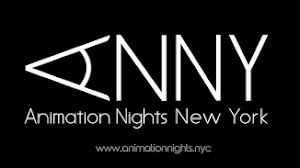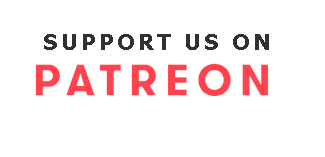Wonder: Recent Independent Animation from Japan
A rare and exciting opportunity to view a different side of Japanese animation took place in Chicago on Thursday, March 10th, at the Gene Siskel Film Center as part of their “Conversations at the Edge” series, sponsored and coordinated with the School of the Art Institute of Chicago. Titled “Wonder: Recent Independent Animation from Japan,” the program was curated by Japanese scholar, curator, and distributor Nobuaki Doi. There were eight featured animation short films from two generations of independent Japanese animators, dated from 2008 - 2015. To be clear, these are neither films you would expect to see if you are thinking popular anime series, nor films resembling the type of feature animation so popular from Japan recently.
As explained by Doi, independent animation of this kind has only a recent history in Japan. Whereas a superstar creator such as Osamu Tezuka did produce experimental animated shorts, he only could do this because he was already famous for his commercial animation and manga. Aspiring animators in Japan went to find work directly at animation studios, where they learned to hone their art. Apparently, it is only in the last twenty years that Japanese universities opened animation programs, giving rise to the type of film shown in this program. Though billed as “independent” I think it would be more accurate to describe these as “experimental” – films that play with animation styles and techniques, as well as narrative and visual form, to create uniquely personal works. Narrative is usually less of a goal than presenting the artist’s personal viewpoint. As Doi further explained, the artists whose films were shown are part of two generations – the original generation of art school graduate creators and a second generation that has now emerged. Interestingly, the original generation has remained focused exclusively on producing their personal animated films, while the second generation apparently sees animation as almost ubiquitous, an art form that can be used for anything. Often used to begin their careers, artists of the second generation have many additional aspirations, with music careers seeming to be a popular goal as well. Some of the second generation have very unique styles, so it was surprising when Doi said that some of them were garnering commercial contracts for work retaining these styles. It will be interesting to see what comes out of Japan – in all media - in the coming years!
Though billed as “independent” I think it would be more accurate to describe these as “experimental” – films that play with animation styles and techniques, as well as narrative and visual form, to create uniquely personal works. Narrative is usually less of a goal than presenting the artist’s personal viewpoint. As Doi further explained, the artists whose films were shown are part of two generations – the original generation of art school graduate creators and a second generation that has now emerged. Interestingly, the original generation has remained focused exclusively on producing their personal animated films, while the second generation apparently sees animation as almost ubiquitous, an art form that can be used for anything. Often used to begin their careers, artists of the second generation have many additional aspirations, with music careers seeming to be a popular goal as well. Some of the second generation have very unique styles, so it was surprising when Doi said that some of them were garnering commercial contracts for work retaining these styles. It will be interesting to see what comes out of Japan – in all media - in the coming years!
Most of the films shown employed 2D animation to create dreamlike perspectives, meaning that similar to dreams, events often kept reoccurring, or had odd juxtapositions, similar to what we call “jump cuts.” Many of these films also have what seems to be a dark, or at least absurd, view of our modern day urban environment, society, and human interaction. Doi suggested that many independent animators in Japan are almost exclusively interested in creating their work, do not mind spending so much of their time alone, and remain focused on producing films expressing their singular visions (though this does not seem much different than independent animators, or any other artists that work alone, anywhere).
 The films: Atsushi Wada’s A PIG’S EYE (2010), presents an almost humorous look at family life, but one that becomes disturbing on many levels. An even darker look at urban living and how to be human in an increasingly non-organic world is Kei Oyama’s HANDSOAP (2008), using lots of black spaces in conjunction with photography of various human skins to convey a sense that, even when there is something to enjoy, does it really mean anything? In ShiShi Yamazaki’s MOONLIT NIGHT & OPAL (2015), animated television static is used to create another film suggesting our modern wonders may not be so wonderful after all.
The films: Atsushi Wada’s A PIG’S EYE (2010), presents an almost humorous look at family life, but one that becomes disturbing on many levels. An even darker look at urban living and how to be human in an increasingly non-organic world is Kei Oyama’s HANDSOAP (2008), using lots of black spaces in conjunction with photography of various human skins to convey a sense that, even when there is something to enjoy, does it really mean anything? In ShiShi Yamazaki’s MOONLIT NIGHT & OPAL (2015), animated television static is used to create another film suggesting our modern wonders may not be so wonderful after all.
Other films in the program focus more on finding a way to live within the world, existing even if the outside remains crazy, or undesirable. Also, as with much successful animation everywhere, the relationship between music and animation is important. Animated visuals often need to pair with music to find something that motivates their motion. So it is not surprising that Yoko Kuno’s AIRY ME (2012) served as a music video for a singer named Cuushe. In the most anime-like film, Kuno’s beautiful and fluid lines tell a vivid story that might have become depressing, set as it is in a medical ward, but the color and motion here gives an option: you can go dark, but you can also choose life. In a somewhat whimsical film, Ryo Hirano’s HOLIDAY (2011), a critter seemingly inspired by the look of Yuri Norstein’s animated animals has a strange journey. Again, the music provides the lightest moments, and it is up to us to decide what is really going on here. And perhaps the most conventional narrative shown was Yoko Yuki’s ZDRAVSTVUITE! (2015), a story about meeting a Japanese man on holiday who only speaks Russian, because he can, and the strange day that proceeds from there. At the end of the day, he goes home, but will return the next day to entertain someone else with his explorations in a foreign language.
 In the two most typical animated films, we have animators doing what animators have done since the art form arose: playing with images directly tied to a musical score. Masanobu Hiraoka’s LAND (2013) uses organically round shapes to transform from image to image, set to a nice electronic score. This all gets taken up a notch in shape, color, and transformation in the final short that gave the program its name, Mirai Mizue’s WONDER (2014). This employs a wonderfully whimsical musical track to provide a perfect partner to the exploding organic shapes and colors that move across the screen from every direction. After much darkness, ending on “Wonder” was appreciated by this viewer (though for full disclosure, I was a Kickstarter contributor to “Wonder” and my name can be seen rolling quickly by in the thank you credits, though I was not really aware of the independent Japanese animation scene at the time). Also included in the program was Yoriko Mizushiri’s FUTON (2011), which for me, was a true experimental film, with slow visuals unfolding scenes that were hard for me to decipher!
In the two most typical animated films, we have animators doing what animators have done since the art form arose: playing with images directly tied to a musical score. Masanobu Hiraoka’s LAND (2013) uses organically round shapes to transform from image to image, set to a nice electronic score. This all gets taken up a notch in shape, color, and transformation in the final short that gave the program its name, Mirai Mizue’s WONDER (2014). This employs a wonderfully whimsical musical track to provide a perfect partner to the exploding organic shapes and colors that move across the screen from every direction. After much darkness, ending on “Wonder” was appreciated by this viewer (though for full disclosure, I was a Kickstarter contributor to “Wonder” and my name can be seen rolling quickly by in the thank you credits, though I was not really aware of the independent Japanese animation scene at the time). Also included in the program was Yoriko Mizushiri’s FUTON (2011), which for me, was a true experimental film, with slow visuals unfolding scenes that were hard for me to decipher! All in all, this program reminded me of art-school inspired animation, but these films were obviously mature work from talented artists, and well-done overall. Experimental animation in America usually only gets seen at school presentations, or at an occasional screening like this. The interest is certainly present: this program was completely sold out. The lack of regular screenings of animated shorts in our theaters means missed opportunities for viewers. Watching video on your phone just is not the same as seeing the exploding colorful shapes of “Wonder” on a big theater screen. In a world already moving away from art education for most students, there are too few opportunities to experience animated art. Though the lack of coherent narratives may not suit the casual viewer, the exposure given to the possibilities in artistic style should be welcomed, not only by all animation viewers and fans, but by film audiences of all kinds.
All in all, this program reminded me of art-school inspired animation, but these films were obviously mature work from talented artists, and well-done overall. Experimental animation in America usually only gets seen at school presentations, or at an occasional screening like this. The interest is certainly present: this program was completely sold out. The lack of regular screenings of animated shorts in our theaters means missed opportunities for viewers. Watching video on your phone just is not the same as seeing the exploding colorful shapes of “Wonder” on a big theater screen. In a world already moving away from art education for most students, there are too few opportunities to experience animated art. Though the lack of coherent narratives may not suit the casual viewer, the exposure given to the possibilities in artistic style should be welcomed, not only by all animation viewers and fans, but by film audiences of all kinds.
Further information on the first generation, the CALF collective, can be found here. The second generation is less a group! If you want to arrange screenings of any of these films, try New Deer, Nobuaki Doi's distribution company.









_1.47.1.tiff)













